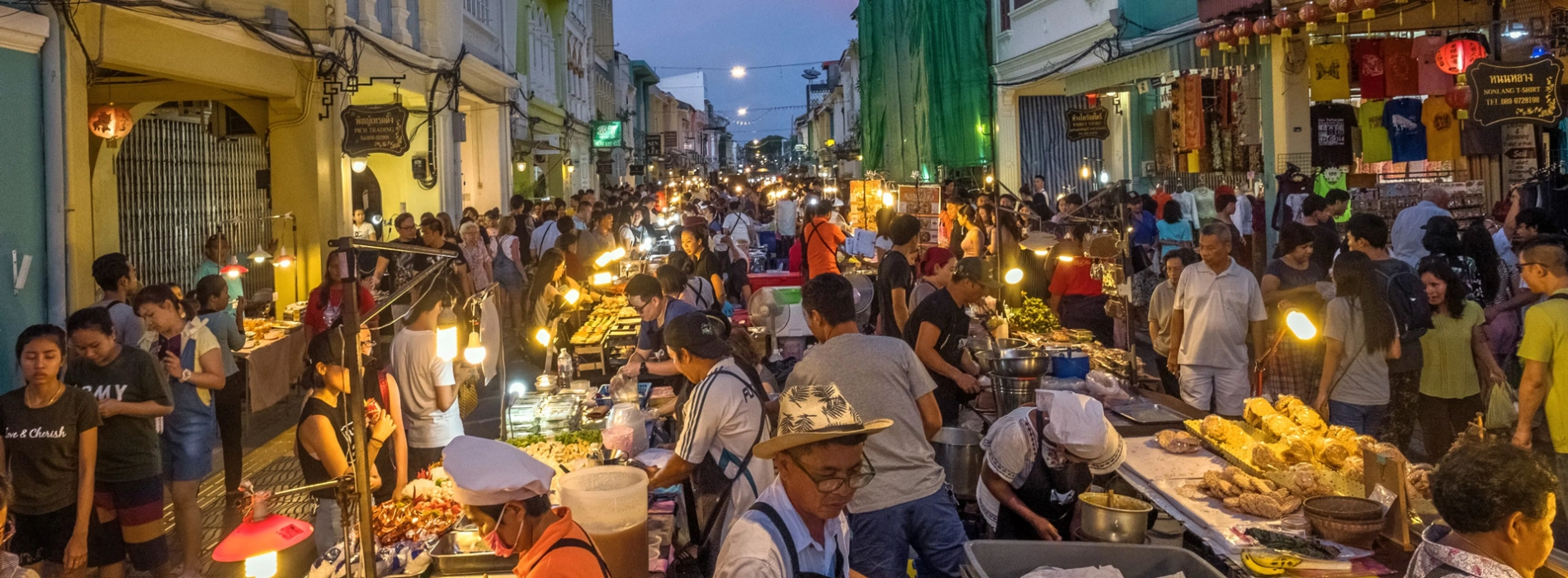
Apart from beautiful beaches, Phuket is also best known for its delicious street food, symbolizing Thai customs. As the best way to express authentic Thai cuisine and culture without drilling a hole in your pocket, Phuket street food will get your heart when you sample it and give you an unforgettable “foodgasm.” Let’s figure out these must-try street foods!
Undoubtedly, there are plenty of choices for visitors who want to sample street food in Phuket, from bustling night markets to small stalls along the roadside. The smell of popular Pad Thai or traditional Moo Ping will surely attract your olfaction; furthermore, the food is affordable and incredibly tasty, which will mark in visitors’ hearts memorable experiences.
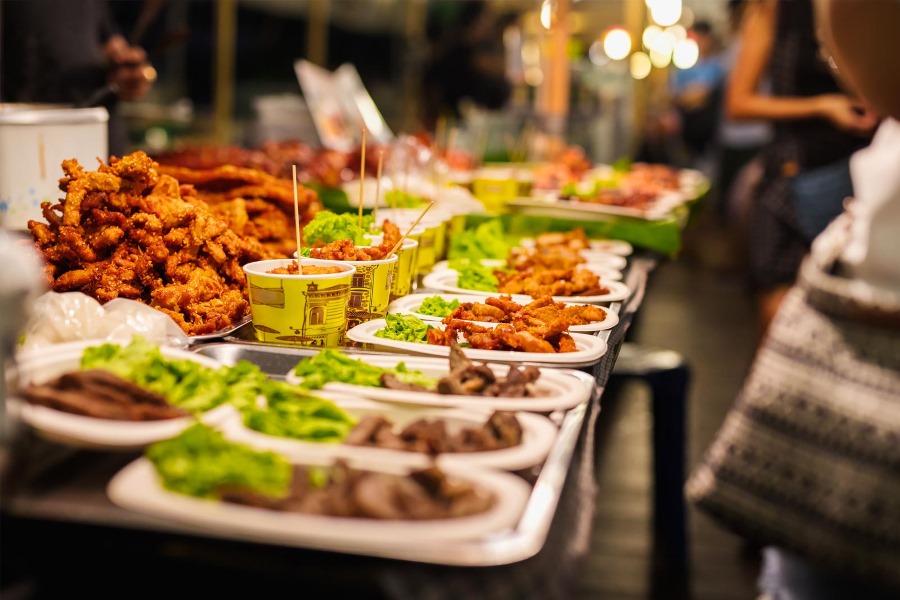
Top must-try street foods in Phuket. (Source: Siam Niramit Phuket)
It is an essential part of the local culture and a great way to experience the unique flavors of Thailand. Here are some must-try street foods in Phuket.
Suggested for you: Phuket Tour 6 Days 5 Nights: Exciting Destinations
The origin of Pad Thai was during the totalitarianism of Plaek Pibulsonggram, or Phibun, who ruled Thailand for 2 periods: 1938-1944 and 1948-1957. Phibun had requested to make a dish that would be an emblem of the country and that would make Thai cuisine stand out in the world.
Pad Thai, meaning Thai stir-fry, is a balanced blend of sweet, sour, and spicy flavors, with the main ingredients being rice noodles, vegetables, bean sprouts, egg, shrimp, chopped peanuts, and spices.
Sometimes, it may be mixed with chicken, beef, or veal and is usually served with a slice of lemon to add that citrusy touch that Thai cuisine often includes. The recipe and seasonings may vary according to the cook, but one of the elements that should not change is the tamarind sauce, which should be made in an artisanal way and over low heat.
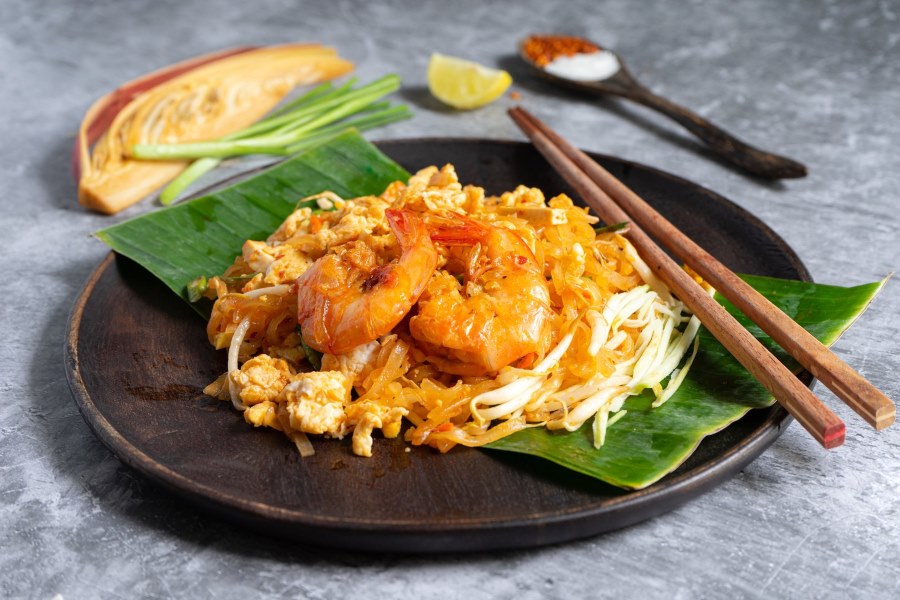
Pad Thai in Phuket. (Source: iVIVU)
What is peculiar about the origin of Pad Thai is that this was originated and backed by the government instead of just being a shared recipe passed down through the generations. Truth be told, apart from most food in Asia that has a history, Pad Thai is comparatively new; the origin is influenced by modern ways of cooking.
It was a successful mission. It took the appropriate spot in Thai food to be loved both in homes and on the streets. Several street vendors, along with small restaurants, make and sell it every day for lunch and dinner.
Today Pad Thai is one of the most iconic dishes of Thai cuisine, so don't forget to try it on your next visit and delight yourself with its exquisite flavors.
Khao Niao Ping, the grilled sticky rice dish, has been a beloved part of Thailand's vibrant street food culture for centuries. It is a traditional Thai dessert featuring grilled sticky rice often combined with ripe bananas for a unique sweet and creamy flavor.
Originating from the Isan people of northeastern Thailand, it was a dietary staple, and grilling it over charcoal became a practical way to cook and enjoy this versatile grain.
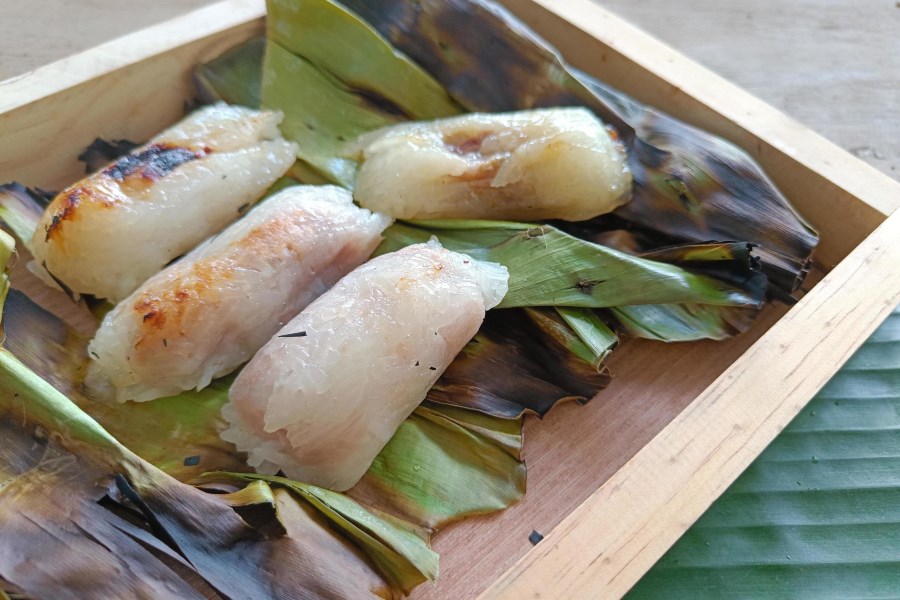
Khao Niao Ping. (Source: Vecteezy)
Over the years, the recipe has evolved, with variations emerging across different regions of Thailand. Yet, the core elements (such as the sticky rice, the smoky char from the grill, and the sweet, caramelized glaze) have remained constant, making Khao Niao Ping a beloved and enduring part of Thai street food culture.
Today, you can find vendors serving up this iconic dish in bustling markets and on busy street corners, offering a delicious taste of Thailand's rich culinary heritage. With its vibrant flavors and satisfying textures, it's a true taste of authentic Thai cuisine that you'll want to enjoy again and again.
This creative Thai noodle soup dish is served with both pork and beef seasoned with dark soy sauce and nam tok, which is pig’s blood mixed with salt and spices (which gives it its thick consistency). It is also topped off with some parsley, bean sprouts, radish, basil, and chili flakes.
This dish had appeared in a long-lasting period since the 1940s and was initially served off the boats. They did it from navigating the boat to paddling, from preparing ingredients for the noodles to seasoning, right up to serving passersby.
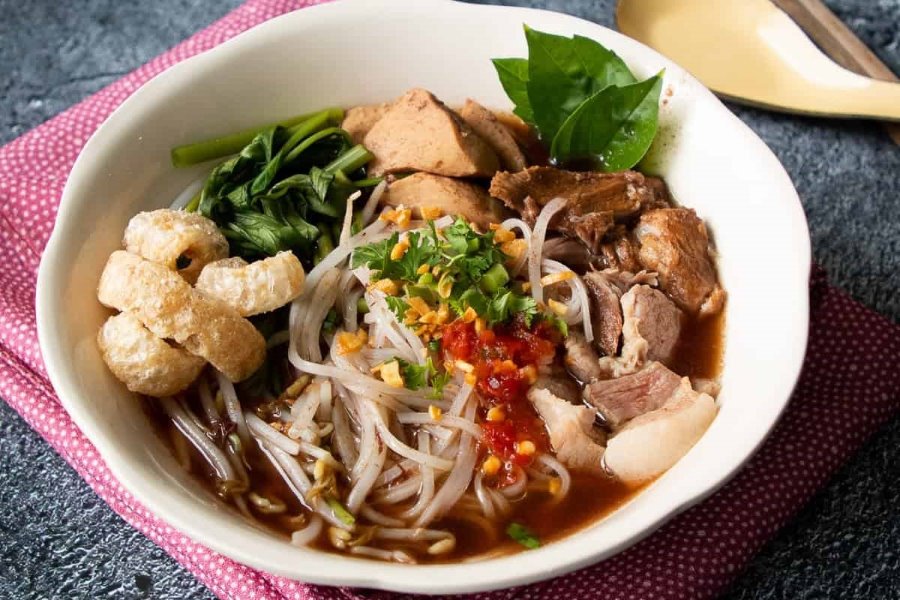
Thai Kuey Teow Soup. (Hot Thai Kitchen)
It is also evident from the pictures that it was mostly served in small bowls. The reason is that while serving it from the boat, the soup often used to spill. They served it in a small bowl for safety, and that was easy to eat from.
Almost in Phuket and somewhere in Bangkok, you may see this dish being served in floating markets or restaurants. If you compare this dish to Vietnamese Pho, you’ll see that the broth for Thai kuey teow soup is dark and thick, whereas the Pho broth is clear and light, often paired with some lime and hot sauce.
The other difference lies in the ingredients. The Vietnamese Pho noodle soup predominantly uses beef. The Thai boat noodles, on the other hand, include pork in three different forms that are in meatballs, pork chops, and cracklings.
One popular Thai breakfast dessert is Khanom Krok. These are sweet coconut puddings that are made up mainly of coconut milk, sugar, and rice flour. Traditionally the food is cooked in a cast-iron pan heated using a charcoal fire, although many street vendors these days use a gas flame.
It is quite an unusual pan containing extremely deep pockets similar to a Takoyaki pan. Another very common tool is a kettle into which the mixture is poured. Khanom Krok is served in various ways, such as being a soft top while the bottom is a bit firm.
You should try Khanom Krok when it’s still hot, but you must be careful; otherwise, you will burn your mouth.
Nowadays, there are plenty of varieties in modern style that are crispy with various toppings, including green parts of spring onions, sweet corn, pumpkin, etc. There is also the seafood version of Hoi Tod Khanom Krok. When served, the two halves are matched and then put inside something, for example, banana leaves or a foam box.
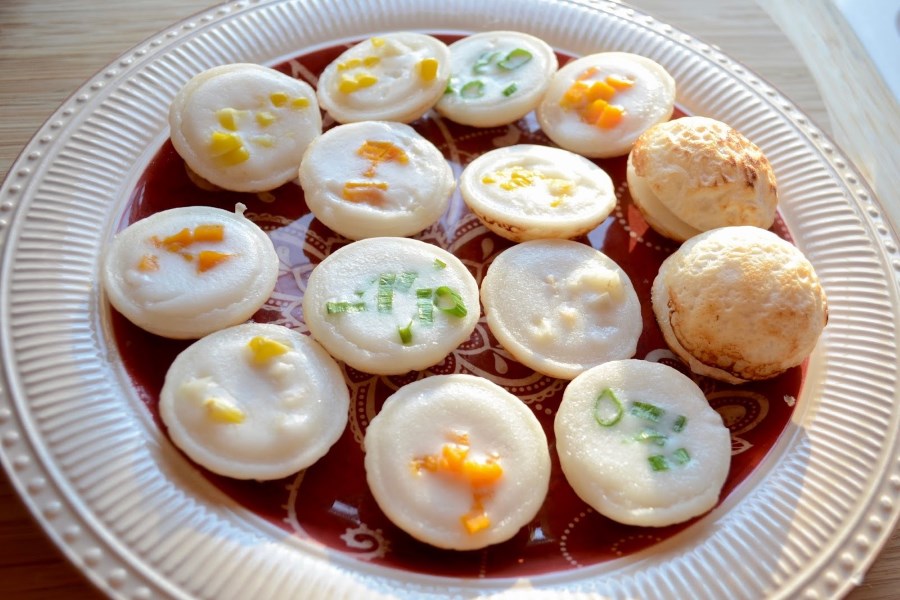
Khanom Krok for your new day in Phuket. (Source: Lada's Kitchen)
Imagining having one Khanom Krok for breakfast and beginning your journey to visit Phuket with Asia King Travel will make your experience much more alluring.
Speaking about sweet street food in Phuket, one desires nothing but a roti pancake. It is quite popular among both locals and visitors, with this lovely, crispy, and buttered treat being perfectly balanced with a taste of one's choice. Being freshly made upon ordering, preparing a Roti Pancake is a performance in itself. Vendors pull the dough into a very thin sheet, put it on a hot griddle, and cook it golden. The product is a scraggy, a bit chewy pancake for almost every different kind of filling.
Its traditional variant is the banana and condensed milk version. Mix ripe banana slices into the pancake before cooking. Then, it is generously poured with sweetened condensed milk.
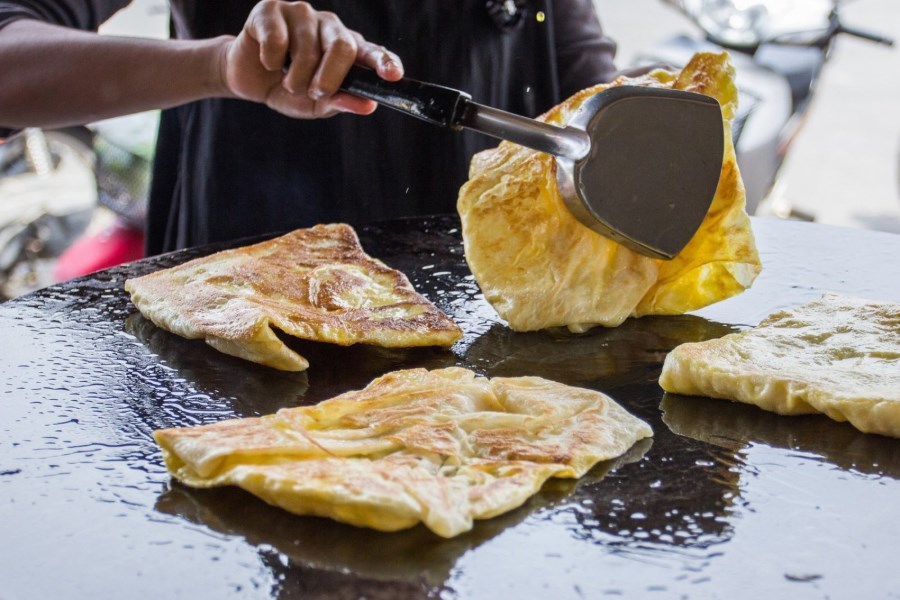
Roti pancake. (Source: Oddviser)
The caramelized bananas create a sticky, rich interior that contrasts perfectly with the crispy outside pancake. Feel free to be inventive and make innovative twists featuring Nutella, mango, or even a savory take with egg and curry. These come together in a mixture of sizzling butter and sweet toppings with an ethereal smell, watering any mouth.
Roti pancakes are something beyond snacking. You can have one for a fast breakfast, as a midday treat, or even as a late-night snack because this food just relieves any kind of hunger. The texture is just right: crispy outside, soft and tender inside, with the proper amount of sweetness that would make one want another.
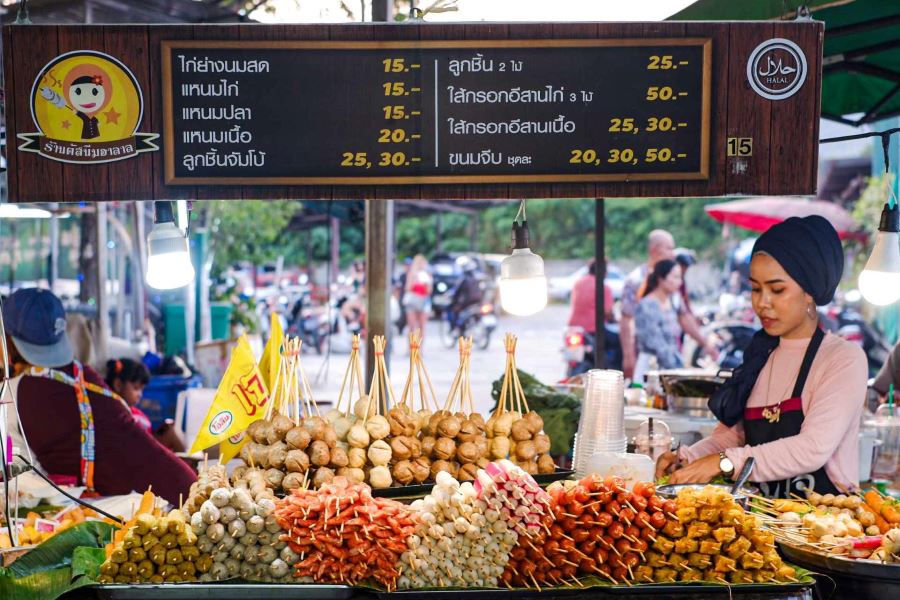
How to enjoy street food in Phuket. (Source: Naka Market Phuket)
Besides the flavor, Phuket street food is all about plunging right into the heart of the island's culture and heritage. Each of the cuisines has a legend behind them. With these must-try recommendations and tips, get ready to go into Phuket's street food scene. Reach for your wallet, follow scents, and let Phuket flavors navigate your culinary journey!
Suggested for you: Phuket Tour 7 Days: Unforgettable Memories